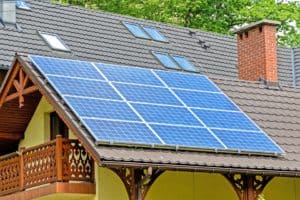
Green Home Renovation: Transforming Houses into Energy-Efficient and Eco-Friendly Spaces
Now, environmental consciousness is more important than ever, and transforming our living spaces into energy-efficient and eco-friendly homes is not just a trend — it’s a necessity.
Green home renovation is about making a series of thoughtful changes, big or small, that collectively make a significant impact on the environment and reduce your carbon footprint. Let’s check how you can do that.
1․ Start with an Energy Audit
Before diving into renovations, it’s crucial to understand where your home stands in terms of energy efficiency. An energy audit involves a professional assessment that identifies areas of energy waste and recommendations for improvements. For example, if your home has outdated insulation, you’re likely losing a significant amount of heat in the winter and cool air in the summer, leading to higher energy bills. So, through an energy audit, you can realize which parts of your home need improvements to make it more energy efficient.
2․ Insulation and Windows Upgrade
One of the most effective ways to make your home energy-efficient is by upgrading your insulation and windows. Proper insulation in walls, attics, and floors minimize the exchange of heat through surfaces, keeping your home warmer in the winter and cooler in the summer.
Similarly, replacing old windows with energy-efficient, double-glazed ones can significantly reduce energy consumption. For instance, 25% to 30% of the energy used for heating and cooling a home is wasted due to its windows.
3. Water Conservation Measures
Water is a precious resource, and conserving it is a critical part of eco-friendly living. Simple measures like installing low-flow showerheads, dual-flush toilets, and rainwater harvesting systems can significantly reduce your water usage. For example, a rainwater harvesting system can collect rain to water your garden, wash your car, or flush toilets, reducing your water bill and conserving a vital resource.
4․ Solar Panels Installation
Solar panels are a cornerstone of green home renovation. By using the power of the sun, you can generate your own clean energy, reduce your reliance on fossil fuels, and even earn rebates or sell excess power back to the grid.
5. Energy-Efficient Appliances and Lighting
Replacing old appliances with energy-efficient models is another effective step towards a green home. Look for products that have the ENERGY STAR mark. This means that they meet U.S. government standards for energy efficiency. Also, swapping out incandescent bulbs for LED lights can save a considerable amount of energy. LED lights use at least 75% less energy and last 25 times longer than traditional bulbs.
6. Sustainable Materials for Renovations
When renovating, choosing sustainable materials can have a big impact. For example, you can use bamboo flooring instead of traditional hardwood. Bamboo grows quickly, making it a more sustainable option. Recycled glass countertops and non-VOC (volatile organic compounds) paints are other examples of eco-friendly choices that can make your home safer and more sustainable.
7. Landscaping for Energy Conservation
Strategic landscaping is an often overlooked aspect of green renovation. Planting shade trees on the south and west sides of your home can reduce cooling costs by blocking intense summer sun, while evergreens on the north side can act as a windbreak against cold winter winds. Additionally, choosing native plants for your garden can minimize water usage and provide a habitat for local wildlife, improving your home’s green footprint.
8. Green Roofing Options
When it comes to roofing, there are several sustainable options to consider. Green roofs, covered with vegetation, can improve insulation, reduce water runoff, and lower urban air temperatures. Alternatively, reflective roofing materials can deflect sunlight and heat away from your home, reducing cooling costs. Materials like recycled shingles or steel roofing are not only durable but also recyclable at the end of their life, making them an excellent choice for eco-conscious homeowners.
Green home renovation is not just about making your home energy-efficient, it’s about creating a healthier, more sustainable living space for the future. Whether you’re making small changes or undertaking major renovations, every step towards eco-friendliness counts.